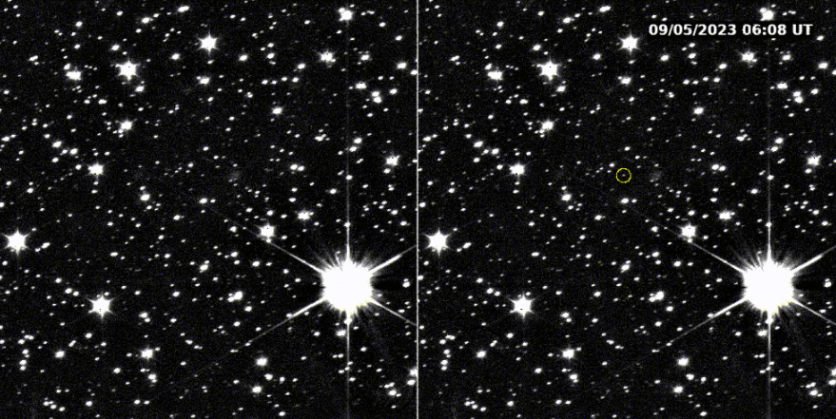NASA's Lucy spacecraft has captured its first images of the main belt asteroid Dinkinesh, marking a significant milestone in its 12-year journey of discovery.
The two images were taken on September 2 and 5 from 14 million miles (23 million km) away from the asteroid. Dinkinesh, which is only about a half-mile wide (1 km), will be the first of 10 asteroids the Lucy spacecraft will visit.

NASA: Lucy's Approach Toward Dinkinesh
In the next two months, Lucy will continue approaching Dinkinesh, culminating in a close encounter of 265 miles (425 km) on November 1.
During this approach, the Lucy team will conduct crucial tests on the spacecraft's systems and procedures, particularly the terminal tracking system.
This system is designed to ensure that the asteroid remains within the instruments' fields of view as the spacecraft hurtles past at an astonishing speed of 10,000 mph (4.5 km/s).
As part of its optical navigation program, Lucy will continue to image the asteroid. To ensure an accurate flyby, The program will utilize the asteroid's apparent position against the star background to determine precisely the relative position of Lucy and Dinkinesh.
However, NASA noted that it would not be until the day of the encounter that Dinkinesh would begin to show surface detail, remaining an unresolved point of light during the long approach.
Most Luminous Entity
In this celestial vista, the most luminous entity is HD 34258, a 7.6 magnitude star in the constellation Auriga, which is not visible to the naked eye from our planet Earth.
Dinkinesh's brightness measures a modest 19 magnitude at this range, rendering it nearly 150,000 times dimmer than HD 34258. According to NASA, the frame encompasses a diameter of approximately 74,500 miles (120,000 km), with the celestial north situated to the right.
These observations were executed using Lucy's advanced high-resolution camera, the L'LORRI instrument, an acronym for Lucy LOng Range Reconnaissance Imager. This equipment was furnished by the Johns Hopkins Applied Physics Laboratory in Laurel, Maryland.
Lucy's principal investigator, Hal Levison, operates from the Boulder, Colorado branch of the Southwest Research Institute, headquartered in San Antonio, Texas. The mission's overall management, systems engineering, and safety measures are overseen by NASA's Goddard Space Flight Center in Greenbelt, Maryland.
The spacecraft itself was constructed by Lockheed Martin Space in Littleton, Colorado. As the 13th mission in NASA's Discovery Program, Lucy is under the administration of NASA's Marshall Space Flight Center in Huntsville, Alabama, through the Science Mission Directorate at NASA Headquarters in Washington.
Related Article : NASA's James Webb Space Telescope Catches an 'Asteroid Photobomber' Roughly the Size of Rome's Colosseum

ⓒ 2025 TECHTIMES.com All rights reserved. Do not reproduce without permission.




